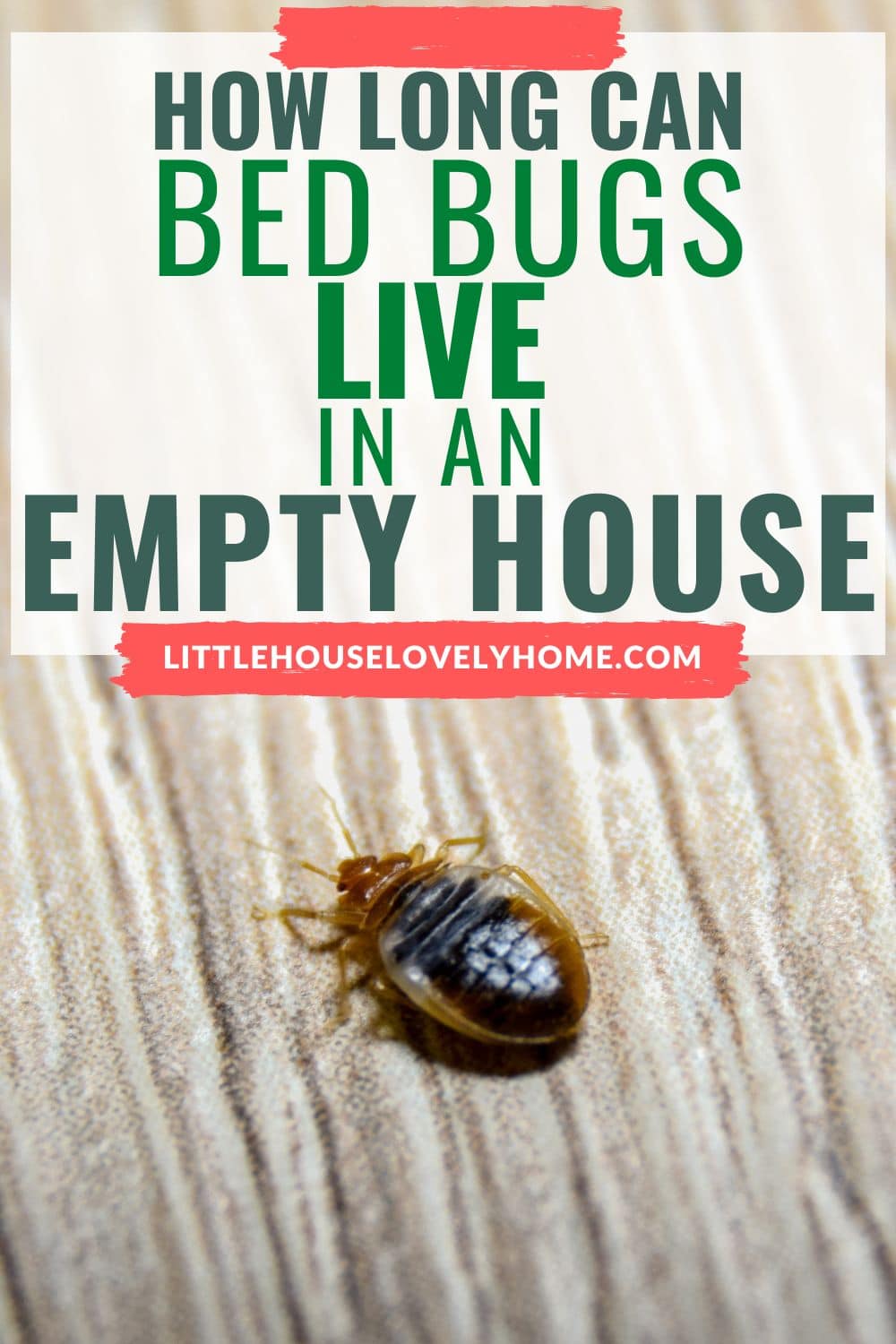If you’re moving and you have a bed bug infestation, what’s the best way to deal with them?
Can you just leave your house empty for a few weeks until they die off? Or will they hitch a ride to your new home with you?
In this blog post, we’ll take a look at how long bed bugs can live in an empty house without a human host, and give you some tips on how to get rid of them.
Bed bugs can live up to a year without a blood meal. If you’re moving, it’s important to take steps to get rid of bed bugs before you move, or they may follow you to your new home.
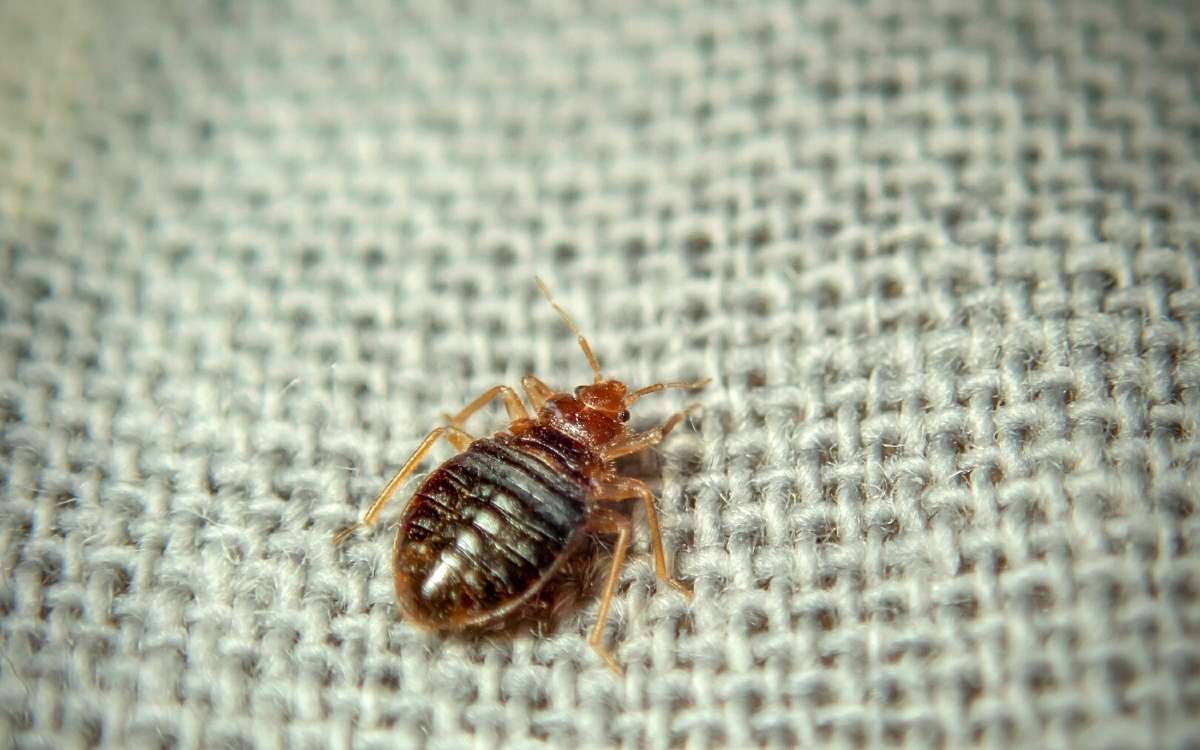
Table of Contents
What are bed bugs?
Bedbugs are small, reddish-brown insects that feed on the blood of animals and humans.
They are attracted to warmth and darkness, which is why they are often found in beds, mattresses, and other furniture.
Although they are not known to transmit disease, their bites can be extremely itchy and uncomfortable.
How long can bed bugs live in an empty house?
Did you know that bed bugs can survive for up to a year without feeding? Seriously – we wouldn’t joke about this.
Unlike other insects that need to feed regularly to survive, bed bugs can live many months without a blood meal.
In a semi-hibernation state, bed bugs can survive for long periods by slowing down their metabolism.
This ability to go without food makes it all the more difficult to eradicate bed bugs once they’ve taken up residence in empty houses.
So even if your empty house is completely clean and free from food sources, the bed bugs may just stay put until someone comes along to provide them with a meal.
How to get rid of bed bugs before you move
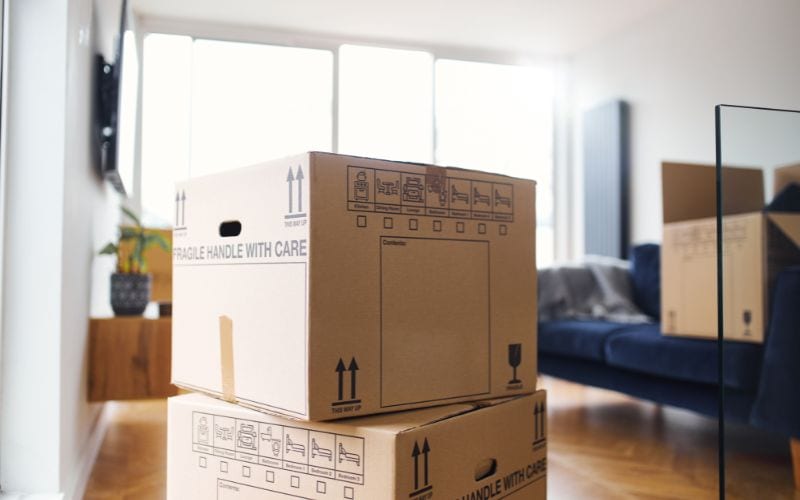
Bed bugs are one of the most difficult pests to get rid of once they’ve infested your home.
If you’re moving, it’s important to take steps to get rid of bed bugs before you move, or you may end up taking them with you to your new home.
They’re small, hard to spot, and proliferate quickly. If you are dealing with an unoccupied house, it can take even longer to spot them as you are not present at the property frequently.
Bed bugs are expert hiders and can squeeze into the tiniest of cracks and crevices. They’re also adept at traveling in furniture being taken from an empty home, which is how they often end up in new homes.
The first step is to identify whether you have bed bugs. Check for small brown spots on your sheets and mattress, and look for tiny black bugs crawling around.
If you see anything suspicious, it’s time to take action.
Vacuum your entire house, paying special attention to any cracks or crevices where bed bugs might be hiding.
Wash all of your linens in hot water, and seal up any clothing or items that can’t be washed in plastic bags.
By taking these steps, you’ll help to ensure that you won’t be moving any unwanted guests when you relocate.
Ways to Get Rid of Bed Bugs (If You Act Quickly)
If you think you have bedbugs, it’s important to act quickly. Here are a few things you can do to get rid of them:
Vacuum thoroughly

Vacuum your home thoroughly, paying special attention to any cracks or crevices where they may be hiding.
Be sure to empty the vacuum bag immediately after use, and dispose of it in a sealed plastic bag.
If it’s in your budget to entirely replace the vacuum bag, this would be erring on the side of caution.
If that is not an option, ensure you check the vacuum bag is completely clean.
Unfortunately, if you find bed bugs in the vacuum bag, it’s best to replace the entire vacuum as they could be through all the hoses and parts of the vacuum.
Wash all linens in hot water
Any bedding or clothing items that can’t be washed should be sealed in plastic bags and either thrown away or dry-cleaned.
Inspect used furniture
Carefully inspect any secondhand furniture before bringing it into your home, as bedbugs can easily hitch a ride on clothing or bedding.
Look for small brown dots on the fabric, as well as any egg casings or molted skin.
If you see any signs of bedbugs, it’s best to avoid bringing the furniture into your home.
Instead, take steps to get rid of the bedbugs before they have a chance to spread.
Wash bedding in high temperatures
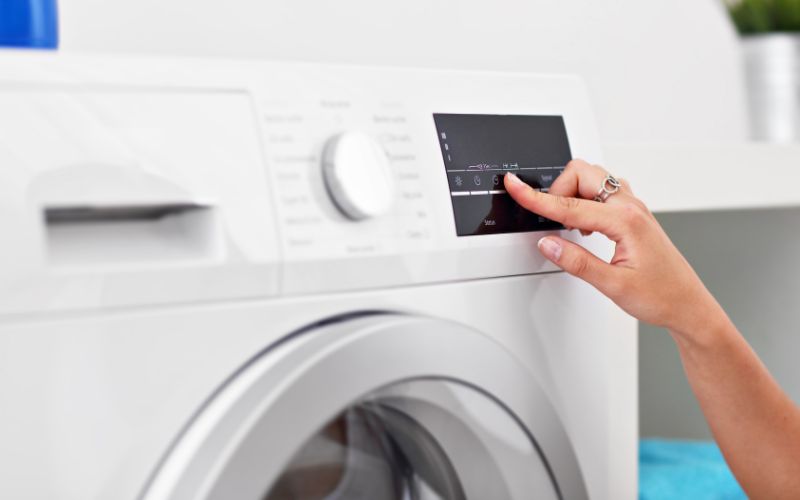
The best way to get rid of bed bugs is to wash all of your bedding and clothing in hot water and dry them on the highest heat setting.
This will kill any bed bugs that are hiding in your bedding or clothing.
You should also vacuum your mattress, bed frame, box spring and furniture to remove any bed bugs that are hiding there.
Seal any cracks or crevices in your home
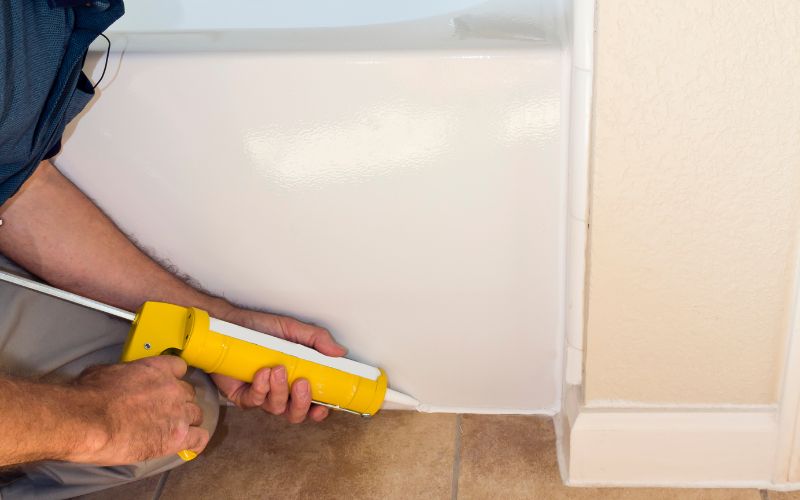
Caulking and sealing are an important part of bed bug prevention.
By filling in cracks and crevices, bed bugs will have fewer places to hide and lay their eggs.
In addition, bed bugs are less likely to be able to climb through small gaps.
Start by inspecting your home for any cracks or crevices, paying special attention to areas where pipes or wires enter the walls.
Once you have found all of the potential entry points, seal them with caulking or another sealant.
Be sure to use a sealant that is designed for indoor use and that is safe for your family and pets.
Contact a professional exterminator who specializes in bed bug infestations
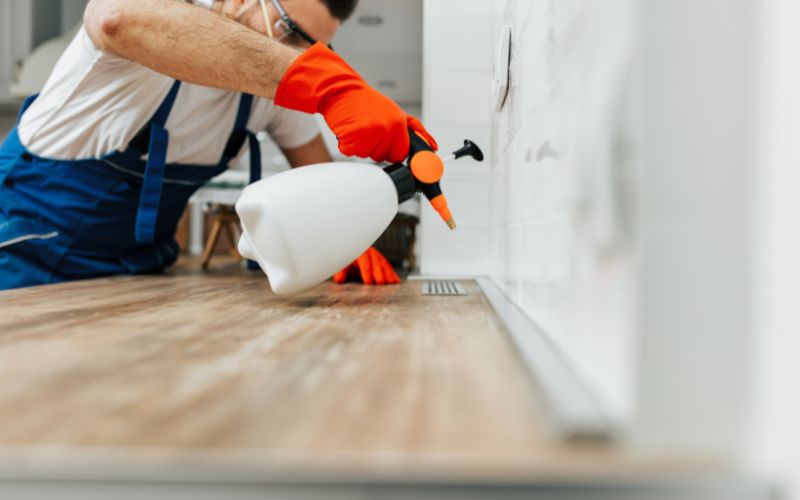
If you have tried everything listed above without success, you’ll need to contact a professional exterminator who specializes in treating these pests.
Exterminators have the experience and knowledge necessary to effectively get rid of bed bugs, and they can also help to prevent them from coming back.
In addition, they can provide you with information on how to protect your home from bed bugs in the future including using encasements on your mattress and checking for bed bugs regularly.
Bed bugs – Frequently Asked Questions

How long can bed bugs live in an unoccupied room?
Bed bugs can go several months without a meal, and they can even longer if they have access to blood.
Bed bugs can also survive in extremely cold or hot temperatures.
So, if you’re wondering how long bed bugs survive in an unoccupied room, the answer is that it depends on the conditions.
If the room is warm and there is a food source nearby, bed bugs could theoretically survive indefinitely.
However, in most cases, bed bugs eventually die of starvation if they don’t have access to a food source.
Can you starve bed bugs to death?
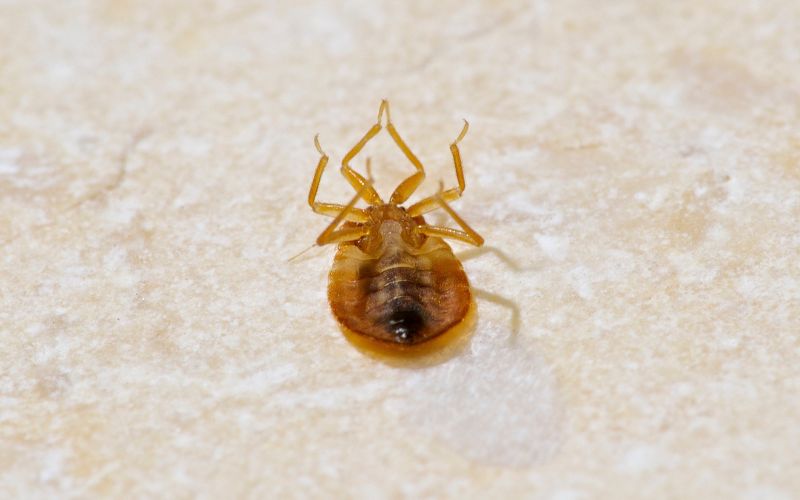
One common question that people have about bed bugs is whether they can starve to death.
The answer is no. Bed bugs can go without food for several months, and they can even survive freezing temperatures.
This means that simply removing all food sources will not get rid of them.
Instead, it is necessary to use a combination of methods, such as freezing, heating, vacuuming, and chemical treatments, to eliminate a bed bug infestation from your home.
How long can a bed bug stay dormant?
Bed bugs can also go for long periods without feeding, entering a state of dormancy or semi-hibernation (known as diapause).
During this time, they will not grow or breed. However, they can quickly resume feeding if they come into contact with a potential host.
Sealing up your home is an important part of preventing a bed bug problem from reoccurring, but it’s not the only step you need to take.
How do professional exterminators get rid of bed bugs?
Professional pest control services have extensive experience in getting rid of bed bugs, and they use specialized equipment and techniques to target both adult bed bug, young bed bug and egg.
One common method that professional exterminators use is heat treatment.
This involves heating the room or rooms where the bedbugs are present to temperatures of up to 120°F to reach a thermal death point (the temperature at which bed bugs die).
According to Dini M. Miller, Ph.D. (“Using Heat to Kill Bed Bugs“, Department of Entomology, Virginia Tech).
“Whole room heat treatments are based on a thermal death point of 113°F. Bed bugs exposed to 113°F will die if they receive constant exposure to that temperature for 90 minutes or more.
However, they will die within 20 minutes if exposed to 118°F. Interestingly, bed bug eggs must be exposed to 118°F for 90 minutes to reach 100% mortality.”
Other methods that professionals might employ include steam cleaning, vacuuming, and chemical treatments aimed specifically at eliminating bedbugs from your living space.
How does diatomaceous earth kill bed bugs?
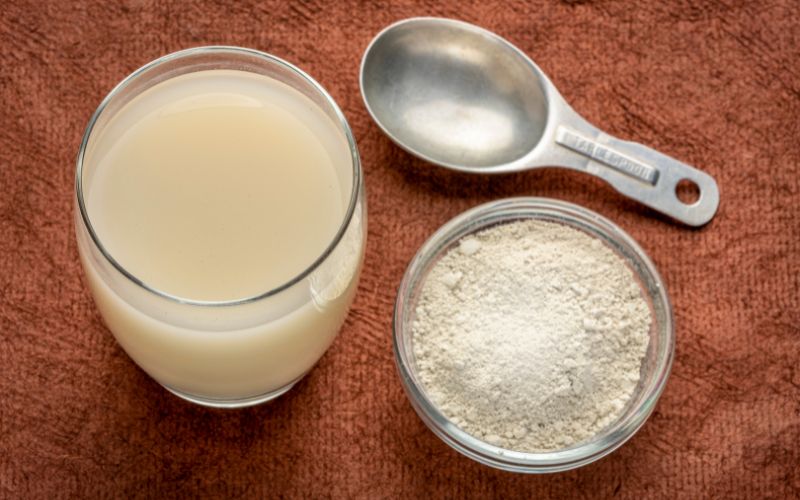
Diatomaceous earth is a white powder made from the fossilized remains of tiny algae-like creatures called diatoms.
Its sharp edges slice through the bugs’ hard shells, causing them to dehydrate and die.
Diatomaceous earth works on any bug with an exoskeleton – insects, arachnids, and even some household pests like cockroaches.
Bed bugs are particularly susceptible to diatomaceous earth because they’re unable to groom themselves effectively.
Their bodies are covered in tiny hairs that help them to regulate their temperature, but these same hairs also prevent them from properly cleaning themselves.
As a result, bed bugs are unable to remove the diatomaceous earth from their bodies, and they eventually succumb to dehydration.
How to prevent bed bugs from coming into your home?
One of the best ways to prevent bed bugs from coming into your home is to avoid them in hotel rooms when you travel.
When staying in a hotel room, keep your luggage off the floor and away from the bed.
Keep your suitcases closed when they’re not in use, and inspect them for bedbugs before bringing them home.
When you return home from your trip, wash all of your clothes in hot water and dry them on the highest heat setting.
Vacuum your luggage carefully before storing it away.
You should also regularly vacuum and steam clean your mattresses and furniture to get rid of any bedbugs that may have made their way into your home.
Final Thoughts – How Long Can Bed Bugs Live in an Empty House?
By taking these steps, you can help rid your home of a bed bug problem and get back to sleeping soundly through the night.
Related:
- How to Get Rid of Drain Worms in the Shower?
- 11 Ways to Keep Dogs From Pooping in Your Yard
- 10 Ways to Keep Raccoons From Pooping on Your Deck
- 12 Ways to Stop Birds from Pooping On Your Car
